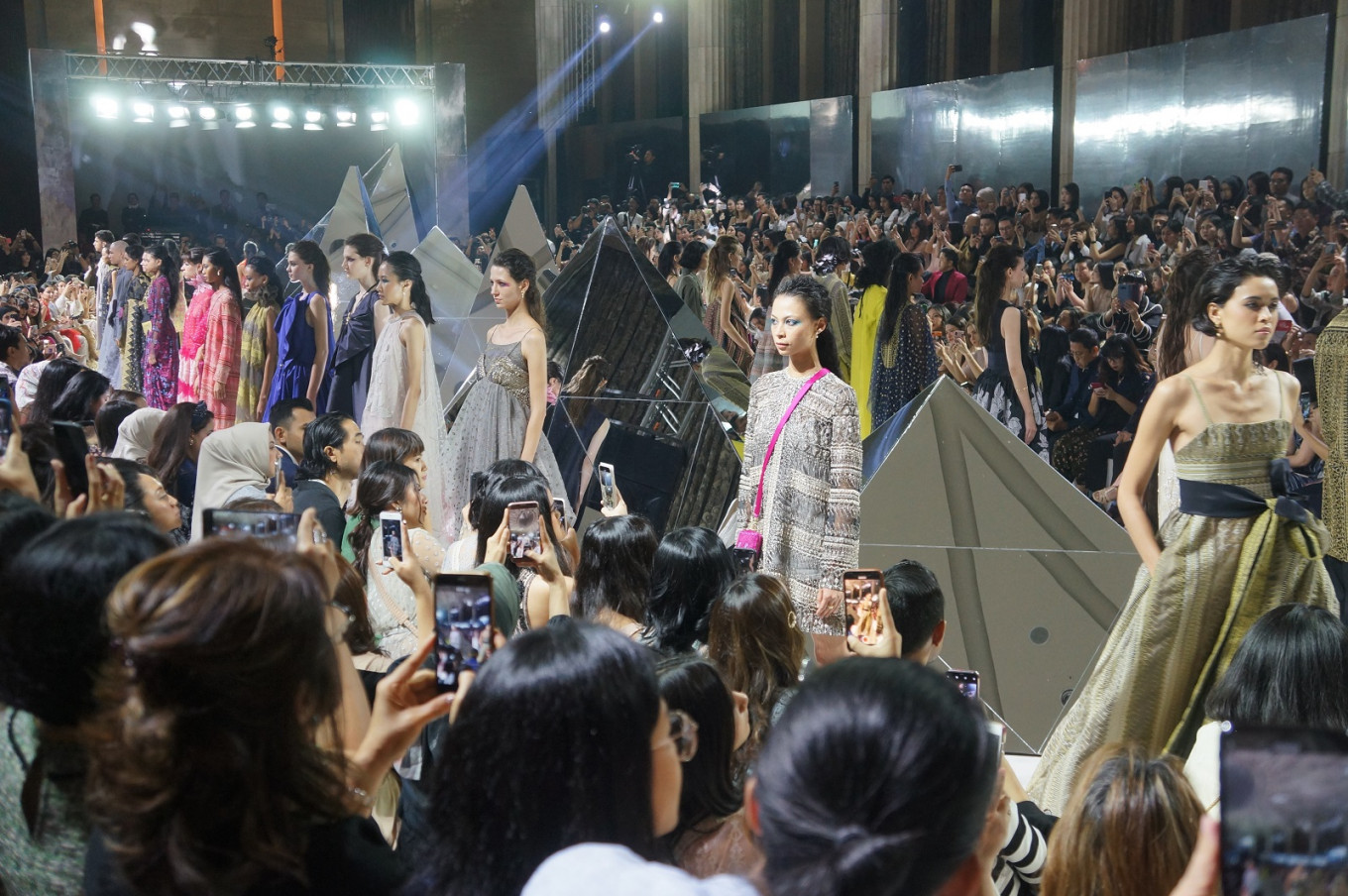Popular Reads
Top Results
Can't find what you're looking for?
View all search resultsPopular Reads
Top Results
Can't find what you're looking for?
View all search resultsSapto Djojokartiko whispers contemporary spells into his spring/summer 2020 collection
Designer Sapto Djojokartiko presented his spring/summer 2020 collection late August, to mark Indonesia’s 74th Independence Day celebration.
Change text size
Gift Premium Articles
to Anyone
D
esigner Sapto Djojokartiko presented his spring/summer 2020 collection in late August, to mark Indonesia’s 74th Independence Day celebration. Held in the Bali room of Hotel Indonesia Kempinski, Jakarta, the fashion show was also the culmination of "Kala: Capturing Indonesian Artistry", an event that celebrated the hotel’s 57th anniversary.
Taking inspiration from Indonesian traditional performing arts, Sapto named the collection “Wisik”, a Javanese word that means inner whisper, revelation.
“Wisik”, comprising 57 looks, incorporated wayang puppet themes and batik motifs that are familiar to Sapto, who originates from Surakarta, Central Java.
The designer is fully aware that the themes he worked on for “Wisik” generally appeal to those who are more mature, but he believes that with a contemporary approach the collection will win the hearts of young people as well.
“I don’t want the brand to be too focused on a certain age range. I think we can attract the younger generation through design [and] how to present the collection, and I believe the more mature crowd will want to look young, while the young ones want to look their age in their personal styles,” Sapto told The Jakarta Post prior to the show.
He went on to say that he thrived on getting his brand accepted by people from a vast age range.
The first impression of “Wisik” intertwined the art of wayang puppetry with contemporary culture, through the “Mirror Gunungan” installation on the runway of the Bali Room. This installation certainly reflected the models presenting the collection, as well as the front-row VIP guests who were mostly dressed in Sapto designs.
Read also: Sapto Djojokartiko goes bold with Sriwijaya Kingdom-inspired collection
True to Sapto’s wish to be accepted by people of all ages, the collection, which also included menswear, came in a wide array of colors, from earth tones to soft pastels and neon, presented by models of various skin tones and ethnic backgrounds. Many different silhouettes also indicated that there was at least one look to choose from in the collection for each body type.
As for wayang puppets and batik, Sapto took some motifs, for instance “sampur”, “modang” and “tirto tedjo” and embroidered them onto such items as jackets, coats, capes, skirts, sweaters, dress shirts and gowns.
A number of ostrich feather-fringed selendang (shawls) completed the look, as well as bright and bold footwear including slingback heels, sandals and mules. Meanwhile, other pieces from the collection were paired with gold jewelry made by jeweler Tulola Designs in collaboration with Sapto himself.











